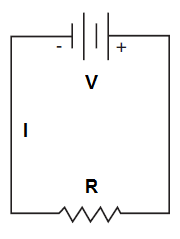Free ASVAB Practice Tests
-
Every Test is UniqueCustom software and unique templates randomize questions, answers, and variables every time you take a new test. You'll never take the same test twice!
-
1,557 Questions, Problems & Flash CardsHuge database of 668 multiple-choice questions, 135 math and algebra problems, and 754 flash cards to help you prepare for the ASVAB.
-
Detailed SolutionsGet a question wrong? All questions and problems have detailed answer explanations so you can learn exactly how to get it right the next time.
-
Know You're ReadyWant to know how you stack up? When you're done with a practice test you can compare your score to everyone else who has ever answered those questions.
-
Interactive Study GuideDetailed ASVAB study guide, MOS study guides, and line score study guides outline exactly what you should know to earn your target scores and customized tests and flash cards for each topic let you laser focus your limited study time.
-
Brand New for 2019ASVAB Test Bank has been completely redesigned for 2019 with all new questions, problems, and flash cards. And the redesign isn't done! Coming soon:
- More Content
- More questions, problems and flash cards
- Bookmarks
- Create a custom study guide with just the topics you're studying
- Score Estimator
- Custom estimate of your potential ASVAB score
Plus printable tests, Q&A, and an ad-free upgrade. Have a suggestion? Please let us know what you want!
Take an ASVAB Practice Test
Sample Practice Test Questions
The large intestine does which of the following?
processes the physical waste produced by digestion
The large intestine (colon) follows the small intestine and processes the physical waste produced by digestion, absorbing water and minerials that remain back into the body. Solid waste is then stored in the rectum while liquid waste is stored in the bladder.
The conversion of alternating current (AC) into direct current (DC) is called:
rectification
A diode allows current to pass easily in one direction and blocks current in the other direction. Diodes are commonly used for rectification which is the conversion of alternating current (AC) into direct current (DC). Because a diode only allows current flow in one direction, it will pass either the upper or lower half of AC waves (half-wave rectification) creating pulsating DC. Multiple diodes can be connected together to utilize both halves of the AC signal in full-wave rectification.
Which of the following is not true about both rectangles and squares?
the lengths of all sides are equal
A rectangle is a parallelogram containing four right angles. Opposite sides (a = c, b = d) are equal and the perimeter is the sum of the lengths of all sides (a + b + c + d) or, comonly, 2 x length x width. The area of a rectangle is length x width. A square is a rectangle with four equal length sides. The perimeter of a square is 4 x length of one side (4s) and the area is the length of one side squared (s2).
Which of the following nuts prevent loosening via nylon in their threads?
lock
Wrenches are used with threaded fasteners like bolts and nuts. A bolt has external threads while a nut has internal threads and this thread pattern combination allows them to lock together and act as fasteners. Nuts come in a variety of configurations including wing nuts which provide appendages that allow tightening and loosening by hand, slotted nuts that use a cotter pin to lock the nut in place and prevent it from loosening, and lock nuts that also prevent loosening via nylon in their threads. Threads are identified by pitch which is the number of threads per inch.
Convert 0C° to F°.
32
To convert from C° to F° use:
\(F° = {9 \over 5}C° + 32\)
\(F° = {9 \over 5}(0) + 32\)
\(F° = 0 + 32 = 32\)
 Use Ohm's Law to calculate the value of resistance in this circuit if voltage is 40 volts and current is 2 amps.
Use Ohm's Law to calculate the value of resistance in this circuit if voltage is 40 volts and current is 2 amps.
Ohm's law specifies the relationship between voltage (V), current (I), and resistance (R) in an electrical circuit: V = IR.
Solved for resistance, R = \( \frac{V}{I} \) = \( \frac{40}{2} \) = 20 Ω
What is \( \frac{3}{3} \) - \( \frac{5}{5} \)?
To subtract these fractions, first find the lowest common multiple of their denominators. The first few multiples of 3 are [3, 6, 9, 12, 15, 18, 21, 24, 27, 30] and the first few multiples of 5 are [5, 10, 15, 20, 25, 30, 35, 40, 45, 50]. The first few multiples they share are [15, 30, 45, 60, 75] making 15 the smallest multiple 3 and 5 share.
Next, convert the fractions so each denominator equals the lowest common multiple:
\( \frac{3 x 5}{3 x 5} \) - \( \frac{5 x 3}{5 x 3} \)
\( \frac{15}{15} \) - \( \frac{15}{15} \)
Now, because the fractions share a common denominator, you can subtract them:
\( \frac{15 - 15}{15} \) = \( \frac{0}{15} \) =
Simplify 7a x 6b.
To multiply monomials, multiply the coefficients (the numbers that come before the variables) of each term, add the exponents of like variables, and multiply the different variables together.
7a x 6b = (7 x 6) (a x b) = 42ab